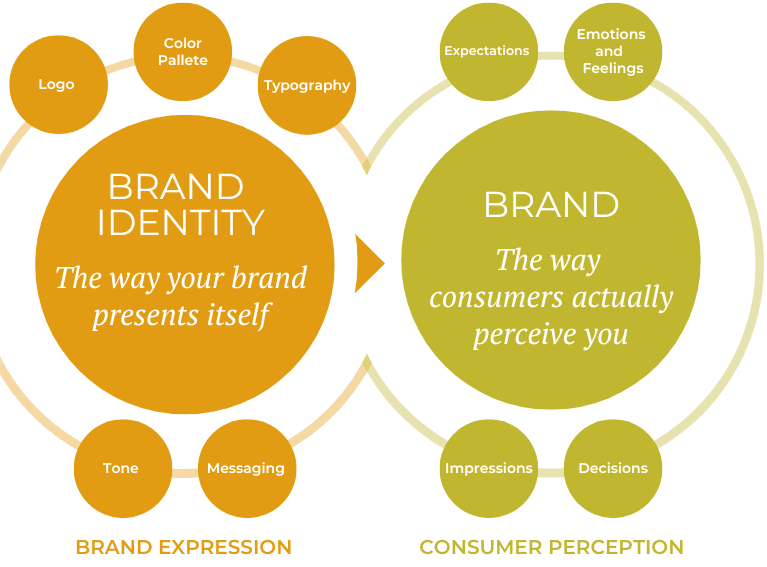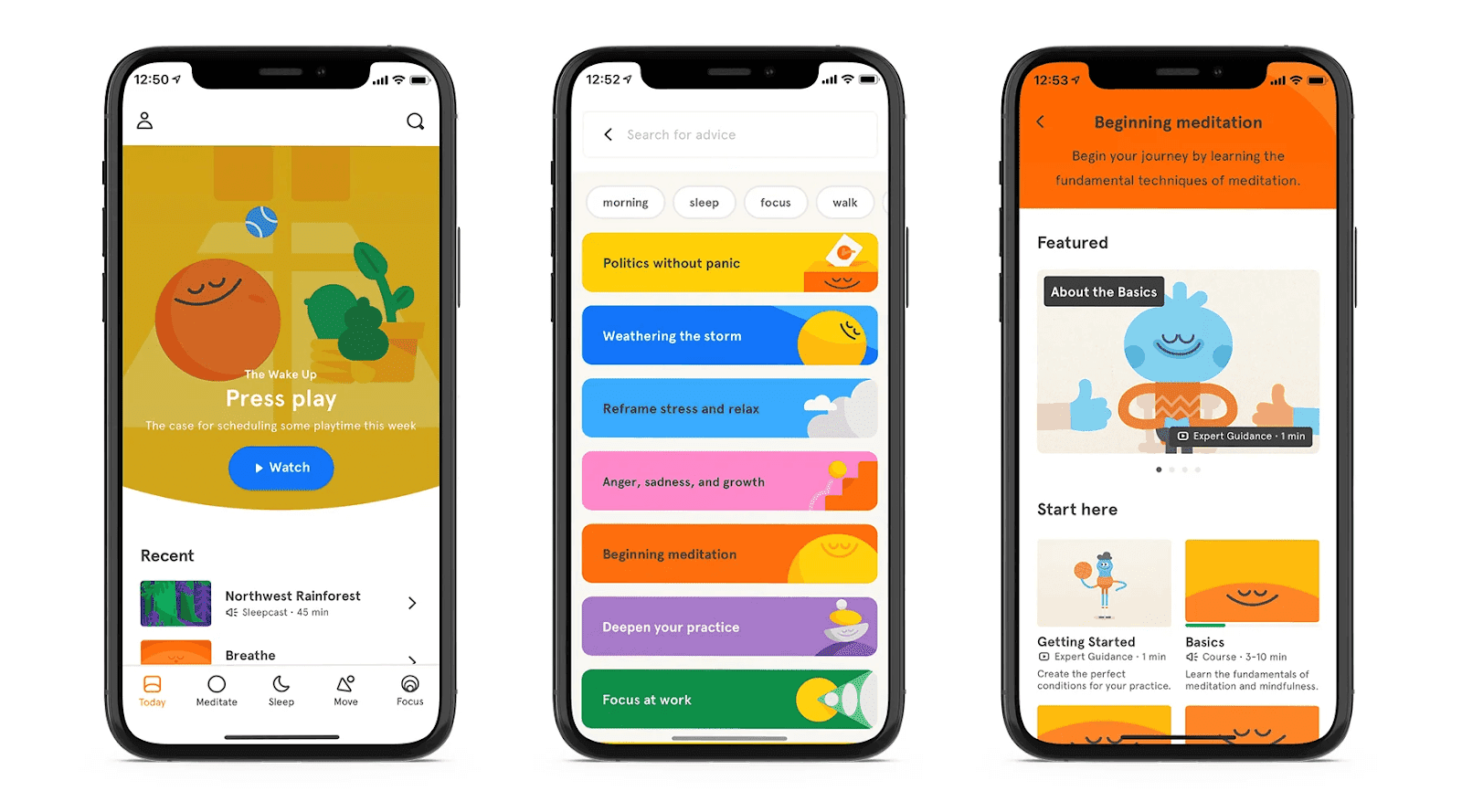Корпоративний світ сьогодні надзвичайно конкурентний. За оцінками, у 2021 році налічувалося приблизно 333 мільйони компаній, і це число продовжує зростати, особливо після пандемії, оскільки дедалі більше людей переходять від роботи до створення власного бізнесу.
В умовах жорсткої конкуренції одних тільки прямих маркетингових ходів недостатньо. Однак не все втрачено, оскільки є спосіб вирізнитися з натовпу.
Вам необхідно сформувати ідентичність свого бренду.
Створення стійкого фірмового стилю дуже важливе, коли йдеться про правильне подання вашого бренду та взаємодію з вашими клієнтами. У цьому гайді ми детально розповімо про те, як створити цілісну ідентичність бренду, інвестуючи у важливі цифрові активи. Давайте розглянемо їх детальніше.
Що таке ідентичність бренду?
Ідентичність бренду — це наче документ, що засвідчує особу людини. Як особистість, ви маєте фото, домашню адресу, номер телефону, відбитки пальців і багато іншого, що відрізняє вас від інших людей.
Аналогічним чином, компанії необхідно мати унікальний набір візуальних елементів або графічних образів, щоб виділити себе з загальної маси.
Незабутній фірмовий стиль охоплює величезну кількість речей, зокрема брендові кольори, соціальні медіа-канали та пости, сайт, логотип та інше. Він також охоплює використовувані шрифти, дизайн візитних карток тощо.
Бренд та ідентичність бренду
Однак слід з розумінням ставитися до відмінності цього поняття від самого бренду. Бренд відрізняється від фірмового стилю тим, що в його основі лежить емоційний зв'язок вашої цільової аудиторії з компанією. Йдеться про те, як ви змушуєте клієнта почуватися, коли він бачить візуальну ідентичність вашого бренду.
Якщо ви хочете досягти великих успіхів у бізнесі, створення популярного бренду є обов'язковою умовою. Вам потрібно, щоб люди перейнялися симпатією до вашої компанії і стали постійними клієнтами. Щоб створити бренд, у вас мають бути всі елементи ідентичності бренду. А для створення фірмового стилю необхідно мати брендові активи.

(Джерело: LinkedIn)
Брендові активи
Брендові активи — це аспекти, що становлять ідентичність бренду, такі як логотипи, відео, фото, слогани, девізи, звуки та інші візуальні елементи.
Наприклад, Apple має унікальний логотип у вигляді наполовину надкушеного фрукта, сіру кольорову палітру та характерну типографіку. Люди сприймають логотип Apple як символ статусу і стоять у довжелезних чергах тільки для того, щоб придбати саме цей бренд.
Тепер, коли ви знаєте, навіщо вам потрібна брендова ідентичність, що має бути у вашому наборі фірмових активів? Нижче перелічено деякі з найважливіших активів бренду.
-
Логотип бренду
Логотип, мабуть, є одним з перших і найважливіших активів бренду, які вам необхідно створити. Він являє собою ілюстративне або графічне зображення того, що символізує весь ваш бренд, і в ідеалі має бути зрозумілим та простим, а не складним та хитромудрим.
Перш ніж звертатися до дизайнера з проханням про розробку логотипу, слід запам'ятати кілька важливих моментів:
- не перестарайтеся з фоном або почерком;
- уникайте барвистих фонів і нерозбірливого почерку;
- колір фону і тексту мають доповнювати один одного, щоб люди могли чітко прочитати написане, не напружуючи очі;
- логотип повинен мати простий шрифт, зрозумілий кожному, і чистий фон;
- не поспішайте з вибором кольорів для логотипу, оскільки використання цих кольорів скрізь у вашому бізнесі робить компанію більш впізнаваною.
Логотип можна розробити по-різному, але краще мати щось таке, що нагадуватиме людям про вашу компанію щоразу, коли вони його бачать. Прикладом запам'ятовуваного та миттєво впізнаваного логотипу є культовий свуш Nike.
Для створення логотипу ви можете найняти дизайнера або використати простий інструмент для дизайну лого, щоб створити його самостійно.
-
Типографіка або шрифт
Шрифти можуть викликати у людей сильні емоції, тому необхідно вибирати шрифти, які добре поєднуються з ідентичністю вашого бренду.
Використовувані шрифти і типографіка також залежать від атмосфери вашого бренду. Якщо це люксовий бренд, простий шрифт не принесе особливої користі, вам слід вибрати більш вишуканий варіант. Аналогічно, ви можете використовувати кумедні шрифти для бренду, пов'язаного з продуктами харчування. Загалом, ви зрозуміли саму ідею.
Це не означає, що потрібно використовувати тільки один шрифт для всіх завдань, пов'язаних з брендом, але ви повинні використовувати одне сімейство шрифтів. У сімейство шрифтів входять усі шрифти, які доповнюють один одного.
-
Палітра кольорів
Використання цілісної палітри кольорів у всьому гарантує, що клієнт почне асоціювати ці кольори з вашим брендом. В ідеалі, щоразу, коли вони стикатимуться зі схожими відтінками, то згадуватимуть про вашу компанію. Бути у свідомості людей — це чудовий маркетинг, оскільки згадки та сарафанне радіо створюють величезний обіг для компаній.
Колірна палітра, вибрана вами, може залежати від безлічі чинників, але є кілька популярних кольорів, які широко використовуються в корпоративному світі:
- синій колір є основним і характерним для багатьох провідних компаній, таких як Facebook, Twitter, LinkedIn та інших;
- компанії, пов'язані з харчовою промисловістю, як правило, використовують більш привабливі та захопливі кольори, такі як червоний, жовтий, помаранчевий тощо;
- компанії, що намагаються зарекомендувати себе як люксові, віддають перевагу чорним або сірим тонам, як, наприклад, Apple.
Однак це абсолютно не означає, що якщо успішна компанія вже використовує синій колір, то вам не можна його вибирати. Ви можете використовувати той самий колір, що й інша компанія, але вся ваша палітра кольорів має бути іншою. Те, як ви використовуєте кольори у вашій унікальній палітрі кольорів, також має бути унікальним.
Узяти як приклад Coca-Cola і McDonald's. Вони мають у палітрі червоний колір, але він поєднується з різними відтінками. І сам відтінок теж різний. Тож майте це на увазі під час вибору палітри кольорів.
Працюючи над палітрою кольорів бренду, не забудьте зробити її доступною для споживачів з порушеннями зору (2,2 мільярда людей у світі) і дислексією (9-12% населення). Ви можете використовувати такі інструменти, як Contrast Checker, Colorable і доповнення Disability Simulator для Chrome, щоб переконатися, що ваш контент доступний для всіх користувачів.
-
Тон і подання інформації
Тон і манера подання інформації вашого бренду об'єднуються в єдиний голос бренду. Прагніть до унікального голосу, який справді відображає суть вашого бренду, щоб створити цілісну і всебічну ідентичність.
Щоб створити голос свого бренду, подумайте про слова, що відповідають тону, який ви хочете задати своєму бренду. Чи хочете ви, щоб тон вашого бренду був потужним або неземним? Віддаєте перевагу серйозному тону або більш химерному?
Прикладом потужного голосу бренду є компанія Dove. Вони пропонують захопливе та збудливе послання про любов до себе та прийняття себе в косметичній індустрії, що свідчить про прихильність бренду до своїх цінностей і клієнтів. З іншого боку, Skittles — чудовий приклад бренду з гумористичним і веселим тоном. Їхня комунікація завжди невимушена, чи то слоган, чи то пости в соцмережах, чи то реклама.

(Джерело: HubSpot)
-
Дизайн сайту
Згідно зі статистикою, близько 2,14 мільярда людей здійснюють покупки в інтернеті. Більшість людей сьогодні користуються інтернетом з метою пошуку інформації, перш ніж прийняти остаточне рішення. Сайт є одним з основних інструментів, використовуваних компаніями для залучення клієнтів, крім соціальних мереж, сайтів відгуків та іншого.
Люди, які клікають на сайт, проводять на ньому дуже мало часу, тому вам необхідний дизайн, що запам'ятовується, здатний спонукати клієнтів залишитися і продовжити знайомство з ресурсом. Користувацький інтерфейс має бути простим, зручним і зрозумілим. Краще, якщо кольори вашого сайту відповідатимуть палітрі кольорів, яку ви вибрали для свого бренду.
Також дуже важливо використовувати однакові кольори і шрифти на картинках і тональність на платформах соцмереж і в email-маркетингу. Це дасть змогу зберегти цілісність бренду і завоювати довіру клієнтів.
-
Слоган
«Пальчики оближеш» — що нагадує вам ця фраза? Правильно, цей слоган KFC назавжди закріпився в нашій свідомості. Майже неможливо думати про щось інше, коли чуєш ці слова.
Неймовірно, як проста гра слів всього в одному рядку може створити неповторний голос бренду. У цьому сила слоганів.
Якщо у вас немає слогану, придумайте його. Слогани можуть формувати спогади і зв'язки з людьми, як жодні інші активи. Подібно до того, як ми запам'ятовуємо вірші, вивчені в дитячому садку, слова, що запам'ятовуються, здатні залишитися в нашій пам'яті.
Візьміть приклад з деяких інших брендів, які мають незабутні слогани. "Think different" для Apple, "You're worth it" для L'Oreal і "Just do it" для Nike.
Ці фрази напрочуд прості. Вам не потрібно вигадувати розумні слова або переінакшувати формулювання до невпізнанності. Потрібно просто придумати щось настільки просте і незабутнє, що це залишиться в пам'яті кожного.
Надихніться цими прикладами фірмового стилю
1. Coca-Cola
Слоган: Справжня магія.
Це класичний приклад того, як дотримання ідентичності бренду може призвести до величезного успіху. Хоча Coca-Cola вносила корективи протягом багатьох років, вони ніколи не втрачали класичні елементи, які роблять бренд незабутнім і впізнаваним.
Основна червоно-біла палітра кольорів і характерна типографіка в їхньому логотипі прекрасно поєднуються одне з одним і створили один з найбільш знакових логотипів усіх часів. Незалежно від того, в якій частині земної кулі ви живете, ви знаєте, що це Coca-Cola, коли бачите її, і ви точно знаєте, що вони продають.
Coca-Cola домінує на ринку завдяки всесвітньо відомому бренду, що викликає посмішку на обличчях людей.

(Джерело: Fabrik)
2. McDonald’s
Слоган: Нам подобається бачити твою усмішку.
Як і Coca-Cola, McDonald's — це всесвітньо відомий бренд, який викликає довіру, де б ви не зіткнулися з його золотими арками.
Цей гігант швидкого харчування дотримується простої червоно-жовтої палітри кольорів, яка запам'ятовується та легко впізнавана в усьому світі. Їхня знакова буква М, яку також називають золотими арками, витримала випробування часом і впізнавана споживачами різного віку.
Незважаючи на те, що їх легко впізнати, вони також відмінно виконують свою роботу, адаптуючи фірмовий стиль для різних аудиторій. Проста палітра кольорів і знакова буква М використовуються поряд з такими персонажами, як Рональд Макдональд і Гамбургер, для просування товарів для дітей (Happy Meals) і на різні ринки, які можуть мати дієтичні обмеження і культурні відмінності. Проте, вони є стовпом стабільності, даючи змогу споживачам почуватися в безпеці та бути бажаними гостями під час відвідування будь-якого з їхніх ресторанів.

(Джерело: AdAge)
3. Headspace
Слоган: Персональний гайд з медитації просто у вашій кишені.
Headspace — це додаток, створений для того, щоб допомогти людям позбутися стресу, який щодня навалюється на них, за допомогою спрямованої медитації та практик усвідомленості. Може здатися, що це важко передати візуально, але вони повністю впоралися з цим завданням.
Логотип Headspace являє собою просту помаранчеву крапку, а назва бренду написана шрифтом sans-serif, простим, чітким і мінімалістичним. Хоча ця помаранчева крапка може здатися не дуже помітною, вона символізує нерухомий, зосереджений і спокійний стан розуму, а це саме те, чого прагне додаток для своїх користувачів.
Ми часто думаємо, що відтінки синього заспокоюють, але Headspace насправді використовує масу кольорів на своєму сайті, у застосунку, а також у соціальних повідомленнях і відео. Ця яскрава і життєрадісна палітра кольорів має сенс поряд з їхньою графікою, що нагадує мультфільм, — вони працюють разом, щоб викликати радість і щастя у користувачів по всіх каналах комунікації.

(Джерело: Paper Leaf)
4. Glossier
Слоган: Шкіра насамперед. Макіяж на другому місці. Посмішка — завжди.
Glossier починався як блог (Into the Gloss) і виріс у величезний бренд косметики та засобів для догляду за шкірою, яким він є сьогодні, завдяки лояльній аудиторії, яку вони змогли завоювати як автентичний і молодий голос у світі краси.
Знаючи, що їхня аудиторія складається здебільшого з молодих шанувальників косметики, які віддають перевагу більш натуральним продуктам, Glossier прийняв розумне рішення створити мінімалістичний фірмовий стиль. Навіть їхній слоган: «Шкіра насамперед. Макіяж на другому місці. Посмішка — завжди», відповідає їхньому природному підходу до краси. Ця комбінація, а також витончена упаковка та реклама з зображенням справжньої шкіри припали до душі споживачам.
Їхній фокус на доступності та інклюзивності допоміг бренду вийти за рамки просто косметичних продуктів і стати lifestyle-брендом. Їхні магазини, а також сайт, соціальні канали та маркетингові кампанії дотримуються основних принципів і дають змогу продукції говорити за себе.

(Джерело: Glossier)
На завершення
Є ще багато інших активів бренду, які мають бути у вашому наборі brand guidelines, наприклад, іконки, ілюстрації, візитні картки, дизайн листів тощо. Однак це найважливіші з них, які визначатимуть для вас решту активів. Не бійтеся грати з кольорами і веселитися.






0 коментарів